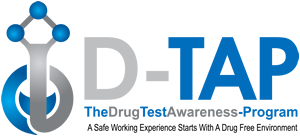Methamphetamine (mAMP)
Methamphetamine is an addictive stimulant drug that strongly activates certain systems in the brain. Methamphetamine is chemically related to amphetamine, but the central nervous system effects of methamphetamine are greater. Both drugs have some limited therapeutic uses, primarily in the treatment of obesity.
Methamphetamine is made in illegal laboratories and has a high potential for abuse and addiction. Street methamphetamine is referred to by many names, such as “speed,” “meth,” and “chalk.” Methamphetamine hydrochloride, clear chunky crystals resembling ice, which can be inhaled by smoking, is referred to as “ice,” “crystal,” “glass,” and “tina.”
Health Hazards
Methamphetamine releases high levels of the neurotransmitter dopamine, which stimulates brain cells, enhancing mood and body movement. It also appears to have a neurotoxic effect, damaging brain cells that contain dopamine as well as serotonin, another neurotransmitter. Over time, methamphetamine appears to cause reduced levels of dopamine, which can result in symptoms like those of Parkinson’s disease, a severe movement disorder.
Methamphetamine is taken orally or intranasally (snorting the powder), by intravenous injection, and by smoking. Immediately after smoking or intravenous injection, the methamphetamine user experiences an intense sensation, called a “rush” or “flash,” that lasts only a few minutes and is described as extremely pleasurable. Oral or intranasal use produces euphoria—a high, but not a rush. Users may become addicted quickly, and use it with increasing frequency and in increasing doses.
Animal research going back more than 20 years shows that high doses of methamphetamine damage neuron cell endings. Dopamine- and serotonin-containing neurons do not die after methamphetamine use, but their nerve endings (“terminals”) are cut back, and regrowth appears to be limited.
The central nervous system (CNS) actions that result from taking even small amounts of methamphetamine include increased wakefulness, increased physical activity, decreased appetite, increased respiration, hyperthermia, and euphoria. Other CNS effects include irritability, insomnia, confusion, tremors, convulsions, anxiety, paranoia, and aggressiveness. Hyperthermia and convulsions can result in death.
Methamphetamine causes increased heart rate and blood pressure and can cause irreversible damage to blood vessels in the brain, producing strokes. Other effects of methamphetamine include respiratory problems, irregular heartbeat, and extreme anorexia. Its use can result in cardiovascular collapse and death.
Extent of Use
Monitoring the Future Study (MTF)*
MTF assesses the extent of drug use among adolescents (8th-, 10th-, and 12th-graders) and young adults across the country. Recent data from the survey indicate the following:
- In 2004, 6.2 percent of high school seniors had reported lifetime** use of methamphetamine, statistically unchanged from 2003. Lifetime use was measured at 5.3 percent of 10th grade students.
- Eighth-graders reported significant decreases in lifetime, annual, and 30-day use.
Community Epidemiology Work Group (CEWG)**
Results reported at the most recent CEWG meetings indicate that methamphetamine abuse and production continue at high levels in Hawaii, west coast areas, and some southwestern areas of the United States—but methamphetamine abuse also is continuing to spread eastward.
The percentage of adult male arrestees testing methamphetamine-positive in 2003 were highest in Honolulu (40.3 percent), Phoenix (38.3) San Diego (36.2), and Los Angeles (28.7).
Several other items of significance were reported, as follows:
- The numbers of clandestine methamphetamine laboratory incidents reported to the National Clandestine Laboratory Database decreased from 1999 to 2004. During this same period, methamphetamine lab incidents increased in midwestern States (Illinois, Michigan, and Ohio), and in Pennsylvania. In 2004, more lab incidents were reported in Illinois (926) than in California (673). In 2003, methamphetamine lab incidents reached new highs in Georgia (250), Minnesota (309), and Texas (677). There were only seven methamphetamine lab incidents reported in Hawaii in 2004.
- In the first 6 months of 2004, nearly 59 percent of substance abuse treatment admissions (excluding alcohol) in Hawaii were for primary methamphetamine abuse. San Diego followed, with nearly 51 percent. Notable increases in methamphetamine treatment admissions occurred in Atlanta (10.6 percent in the first 6 months of 2004, as compared with 2.5 percent in 2001) and Minneapolis/St. Paul (18.7 percent in the first 6 months of 2004, as compared with 10.6 percent in 2001).
- Some MDMA (ecstasy) and cocaine users are switching to methamphetamine, ignorant of its severe toxicity.
- In many gay clubs found throughout New York City and elsewhere, methamphetamine is often used in an injectable form, placing users and their partners at risk for transmission of HIV, hepatitis C, and other STDs.
Crystal Meth
What is Crystal Meth?
Crystal Methamphetamine, better known as crystal meth, comes in many forms and can be smoked, snorted, orally ingested, or injected. The drug alters moods in different ways, depending on how it is taken. Immediately after smoking the drug or injecting it intravenously, the user experiences an intense rush or “flash” that lasts only a few minutes and is described as extremely pleasurable. Snorting or oral ingestion produces euphoria – a high but not an intense rush. Snorting produces effects within 3 to 5 minutes, and oral ingestion produces effects within 15 to 20 minutes. As with similar stimulants, methamphetamine most often is used in a “binge and crash” pattern. Because tolerance for methamphetamine occurs within minutes – meaning that the pleasurable effects disappear even before the drug concentration in the blood falls significantly – users try to maintain the high by binging on the drug. In the 1980’s, “ice,” a smokable form of methamphetamine, came into use. Ice is a large, usually clear crystal of high purity that is smoked in a glass pipe like crack cocaine. The smoke is odorless, leaves a residue that can be smoked, and produces effects that may continue for 12 hours or more.
As a powerful stimulant, methamphetamine, even in small doses, can increase wakefulness and physical activity and decrease appetite. A brief, intense sensation, or rush, is reported by those who smoke or inject methamphetamine. Oral ingestion or snorting produces a long-lasting high instead of a rush, which reportedly can continue for as long as half a day. Both the rush and the high are believed to result from the release of very high levels of the neurotransmitter dopamine into areas of the brain that regulate feelings of pleasure.
Long-term methamphetamine abuse results in many damaging effects, including addiction. Addiction is a chronic, relapsing disease, characterized by compulsive drug-seeking and drug use which is accompanied by functional and molecular changes in the brain. In addition to being addicted to methamphetamine, chronic methamphetamine abusers exhibit symptoms that can include violent behavior, anxiety, confusion, and insomnia. They also can display a number of psychotic features, including paranoia, auditory hallucinations, mood disturbances, and the paranoia can result in homicidal as well as suicidal thoughts.
With chronic use, tolerance for methamphetamine can develop. In an effort to intensify the desired effects, users may take higher doses of the drug, take it more frequently, or change their method of drug intake. In some cases, abusers forego food and sleep while indulging in a form of binging known as a “run,” injecting as much as a gram of the drug every 2 to 3 hours over several days until the user runs out of the drug or is too disorganized to continue. Chronic abuse can lead to psychotic behavior, characterized by intense paranoia, visual and auditory hallucinations, and out-of-control rages that can be coupled with extremely violent behavior.
Source: Parts reprinted from The National Institute on Drug Abuse (NIDA)








